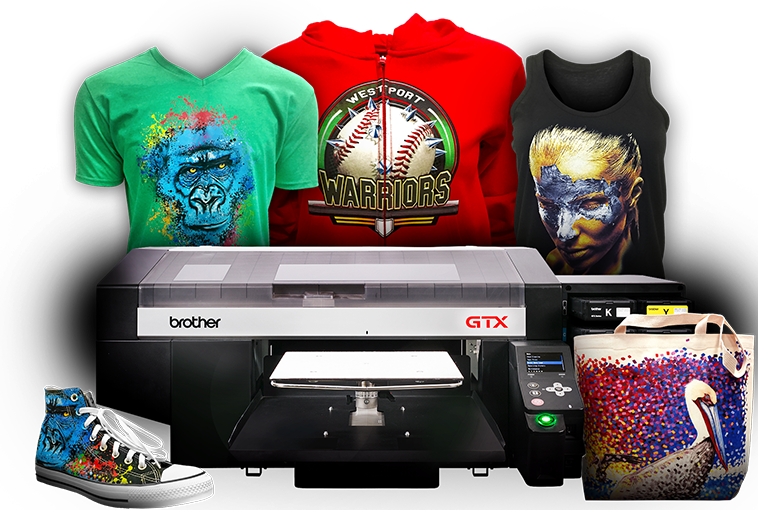The numerous decoration techniques available for apparel and product decoration can be a little confusing. In this article, some of the more common techniques are explained.
Embroidery
Embroidery is the craft of decorating fabric or other materials using a needle to apply thread or yarn.Embroidery may also incorporate other materials such as pearls, beads, quills, and sequins. In modern days, embroidery is usually seen on caps, hats, coats, blankets, dress shirts, denim, dresses, stockings, and golf shirts.

Screen Printing
Screen printing is a printing technique whereby a mesh is used to transfer ink onto a substrate, except in areas made impermeable to the ink by a blocking stencil. A blade or squeegee is moved across the screen to fill the open mesh apertures with ink, and a reverse stroke then causes the screen to touch the substrate momentarily along a line of contact. This causes the ink to wet the substrate and be pulled out of the mesh apertures as the screen springs back after the blade has passed. The item is dried to “cure” the ink. Properly cured screen printed inks will last on a garment or other item through many washes and heavy wear.

Digital Heat Transfer
The digital heat seal transfer decoration method uses controlled heat and pressure to thermally bond graphics onto a material’s surface. Instead of printing directly onto a fabric, your design is printed on a special material designed to fuse with the garment. Digital transfer is one of the newer decoration capabilities available in the apparel world, and it is becoming a popular alternative to screen print/embroidery

Debossing/Embossing
This type of decoration is popular in leather apparel. It works by pressing a cut dye into the surface of a material to create an imprint of the design. The process is similar to embossing, except with embossing, the image is raised on the fabric – with debossing, it’s depressed into the fabric.
Direct-To-Garment Printing
DTG printing uses inkjet technology to print a design right onto the garment, with high resolution (about 1,440 dpi) and no halftone dot or image quality lost.

Dye Sublimation
This decoration style is limited in use, as it can generally only be done on 100% polyester garments. It’s a type of printing that uses heat-sensitive inks – under high temperatures, the ink turns to gas and bonds with the fabric, becoming part of the physical structure of the garment.

Laser
Relatively new, Laser embellishment creates uses a high energy light is used to etch fabrics and other materials. Extremely precise, you can create shapes and patterns as small as one-eighth inch square and text as tiny as eight-point type. Due to the fact that intensity can be controlled, it’s possible to use the laser on a wide variety of products such as: leather golf shoes, wooden bar taps, picture frames, clothing hangers, glass and so much more.


